MacLaren Youth Correctional Facility, East Campus Housing
The Oregon Youth Authority is a correctional agency that has taken a significant departure from the status quo by working to transform the lives of incarcerated youth every day.
Agency
Practice Area
Client
MacLaren Youth Correctional Facility, East Campus Housing
Industry
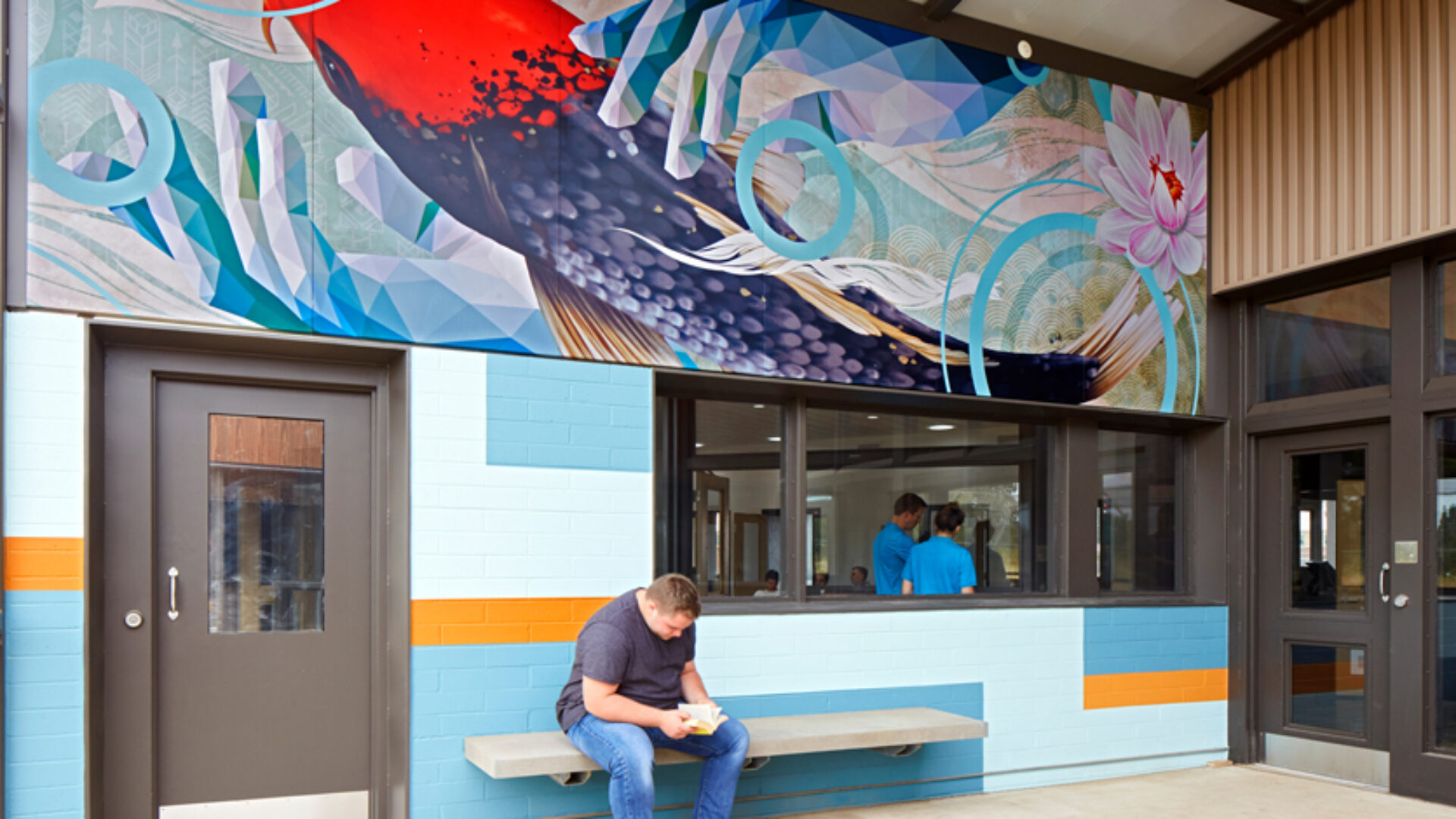
The Challenge
The key was implementing Positive Human Development design elements at all scales including access to outdoors, outdoor views, daylighting, spaces for small group interactions, natural and native materials, and colorful experiential graphics.
Creating a more normalized and less institutional facility to build a community and promote positive development drove the design.
Because this was the first time in campus history that graphics would cover traditionally white institutional walls, the experiential graphics scope of work was both heavily scrutinized and embraced.
Project Vision
OYA and the design team established guiding principles: culturally and socially inclusive to the over-represented minorities in the incarcerated population; meaningful youth participation resulting in quality permanent graphics; represent restorative justice values; safe material and content.
The experiential graphics consultant orchestrated a series of workshops to engage the incarcerated youth. Recognizing that the most meaningful participation would involve authentic storytelling, the youth were asked to bring images, poems, their personal illustrations, and stories that represent established values. In sharing their stories, the youth often assigned human characteristics to animals in tales of transformation, journey, and companionship. This is a common storytelling tradition for many cultures as a means to pass values to the next generation. The graphics consultant and an artist known for works steeped in symbolism and folklore collaborated to compose six original graphics based on stories that resonated with the youth. Represented colors, symbols, patterns, and animals reflect culturally meaningful imagery for a diverse population of many minority identities. Examples include a koi that travels against the current to be rewarded with a transformation, a bear and her cub preparing for hibernation, and elephants that never forget their loyalty and reach out to provide each other with caring touch.
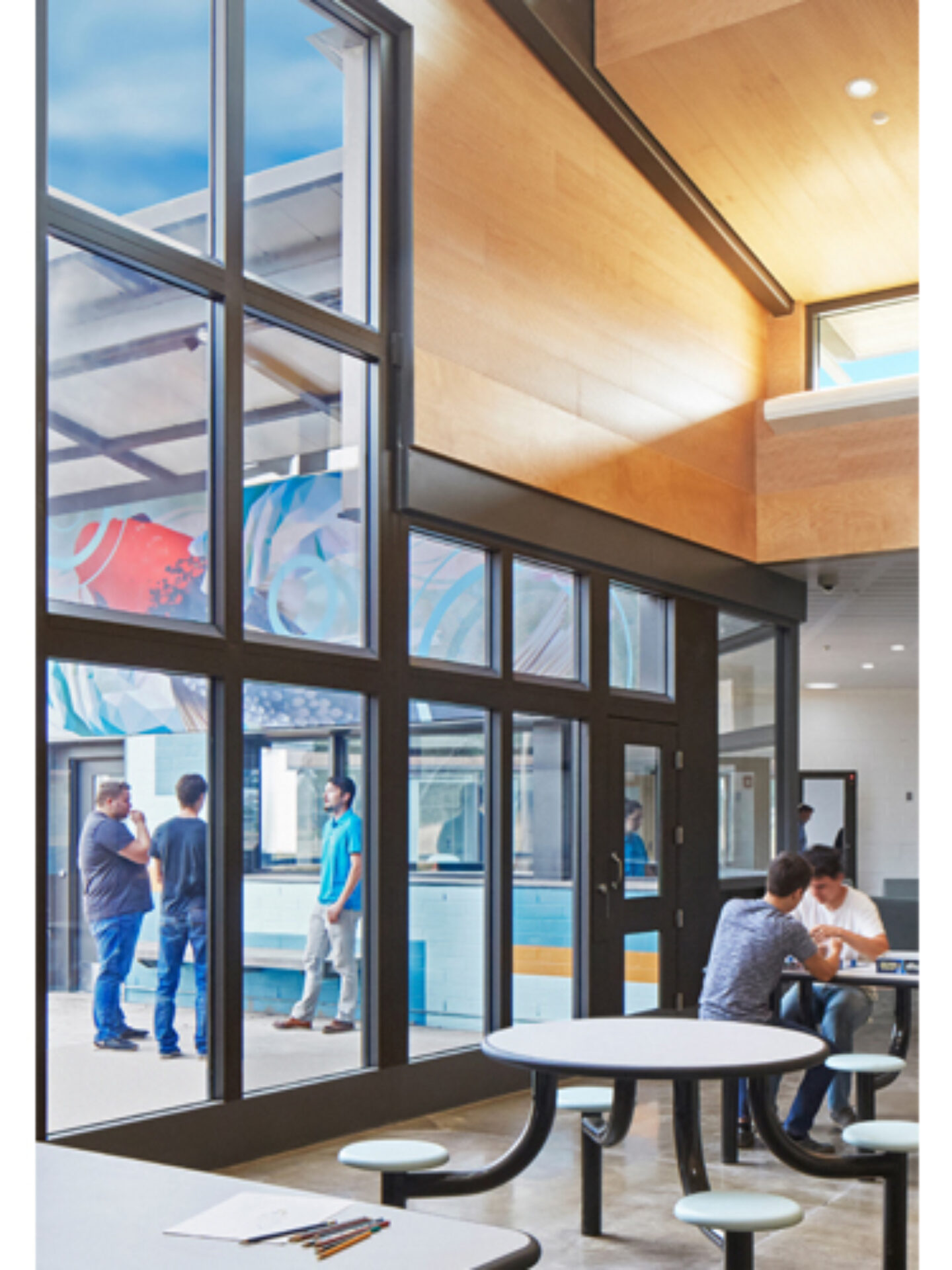
Experiential graphics contribute to an environment of “Positive Human Development” (rather than punishment) in six new housing units at MacLaren Youth Correctional Facility.
Sally Painter, Blaine Fontana, Mayer/Reed, DLR Group
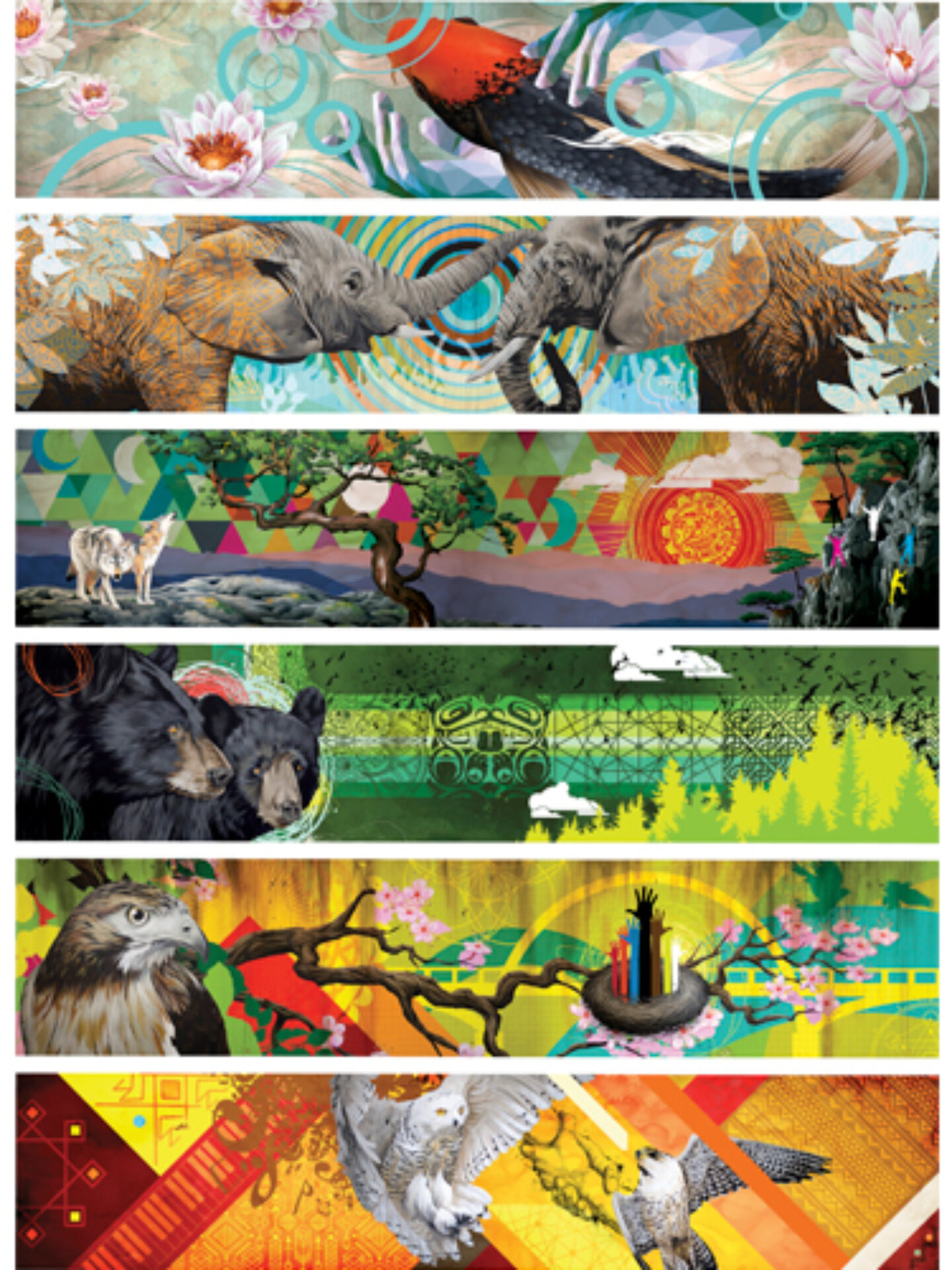
A unique graphic for each “cottage” establishes community identity for 16 tenants. Layered content suggests positive transformation, yet allows viewers to find their own meaning.
Sally Painter, Blaine Fontana, Mayer/Reed, DLR Group
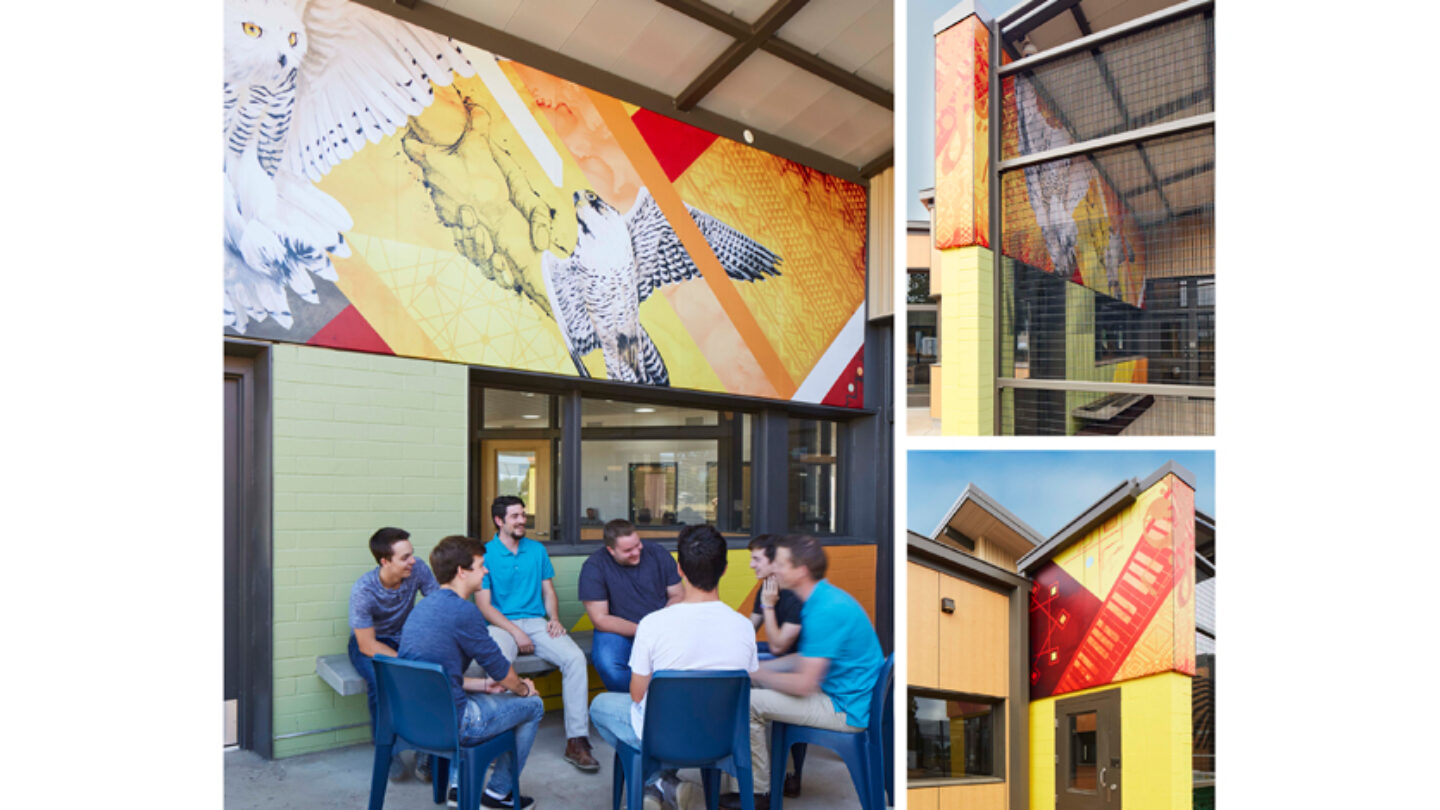
Designed to normalize the environment and inspire conversation and self-reflection, the bold graphics wrap an upper courtyard wall for indoor and outdoor views.
Sally Painter, Blaine Fontana, Mayer/Reed, DLR Group
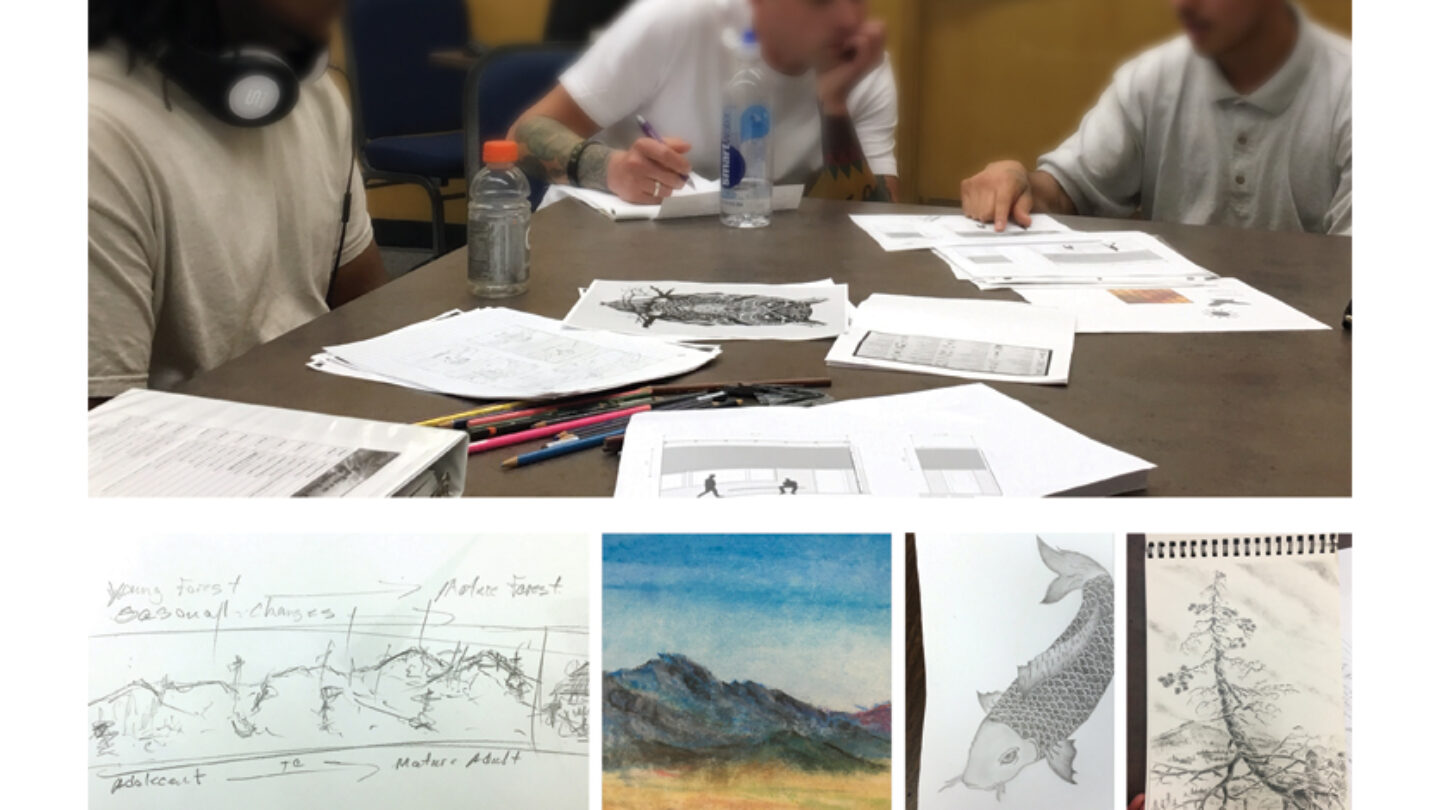
Predesign workshops with staff and incarcerated youth revealed tales of transformation, journey, and companionship. Youth shared images, poems and personal illustrations that inspired the design.
Sally Painter, Blaine Fontana, Mayer/Reed, DLR Group
Design + Execution
Because safety is the highest priority, the graphics are implemented on a powder-coated metal panel system with concealed fasteners.
In the courtyard, the lower portion of the wall is activated with bold paint patterns that extend the energy of the graphic in an easy-to-maintain material. A unique graphic for each cottage establishes community identity for the youths housed there. The bold, colorful designs are layered in content rich with symbolism, yet the designs allow viewers to draw their own interpretations. The graphics support Positive Human Development goals by provoking conversation and spurring self-reflection. As new youth arrive at MacLaren, they are asked, “What do you see?” This begins the process of sharing restorative justice values and inviting the youth to envision the transformation they will strive for.
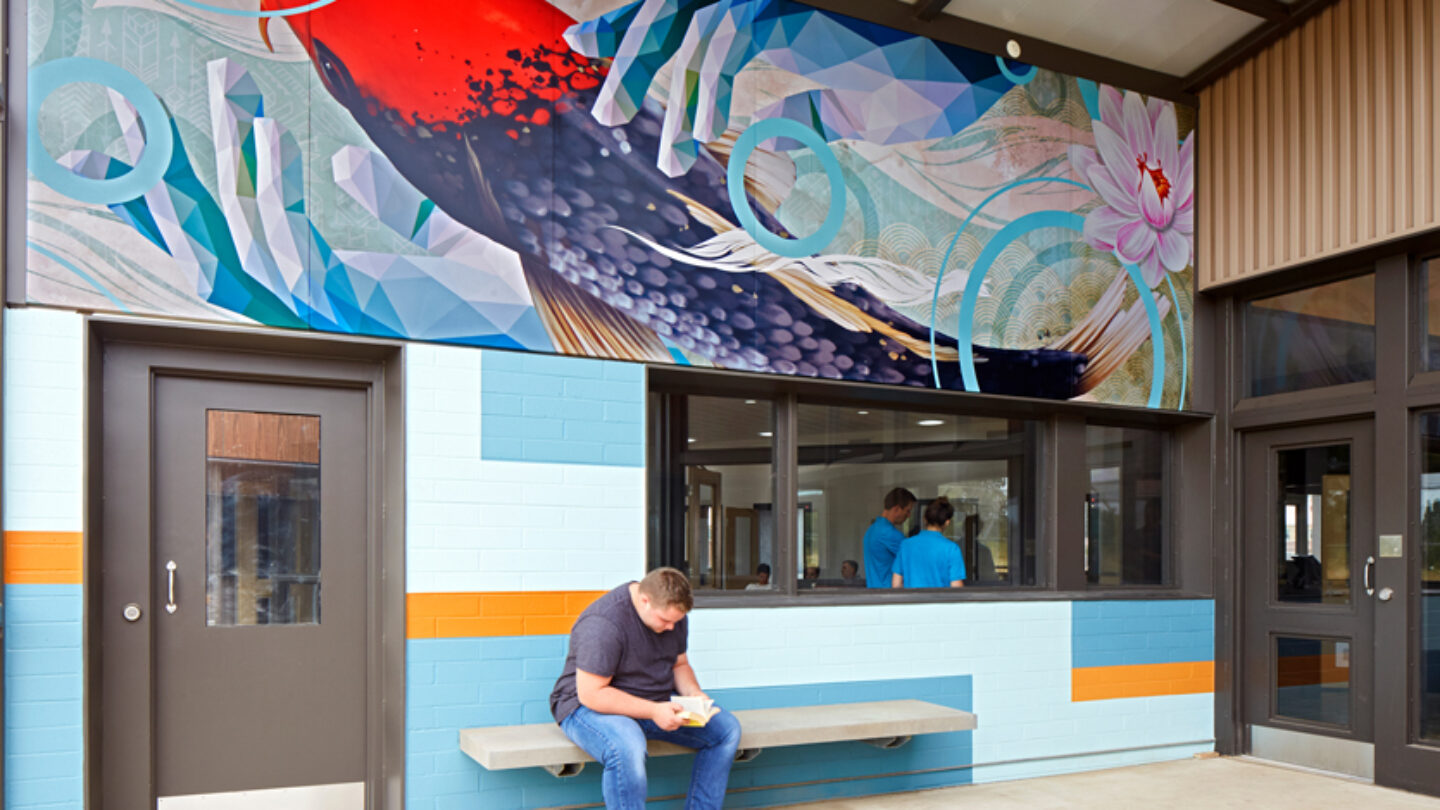
The artwork is printed on durable powder-coated metal panels with concealed fasteners for safety. Easy-to-maintain painted patterns extend the energy across the courtyard wall.
Sally Painter, Blaine Fontana, Mayer/Reed, DLR Group
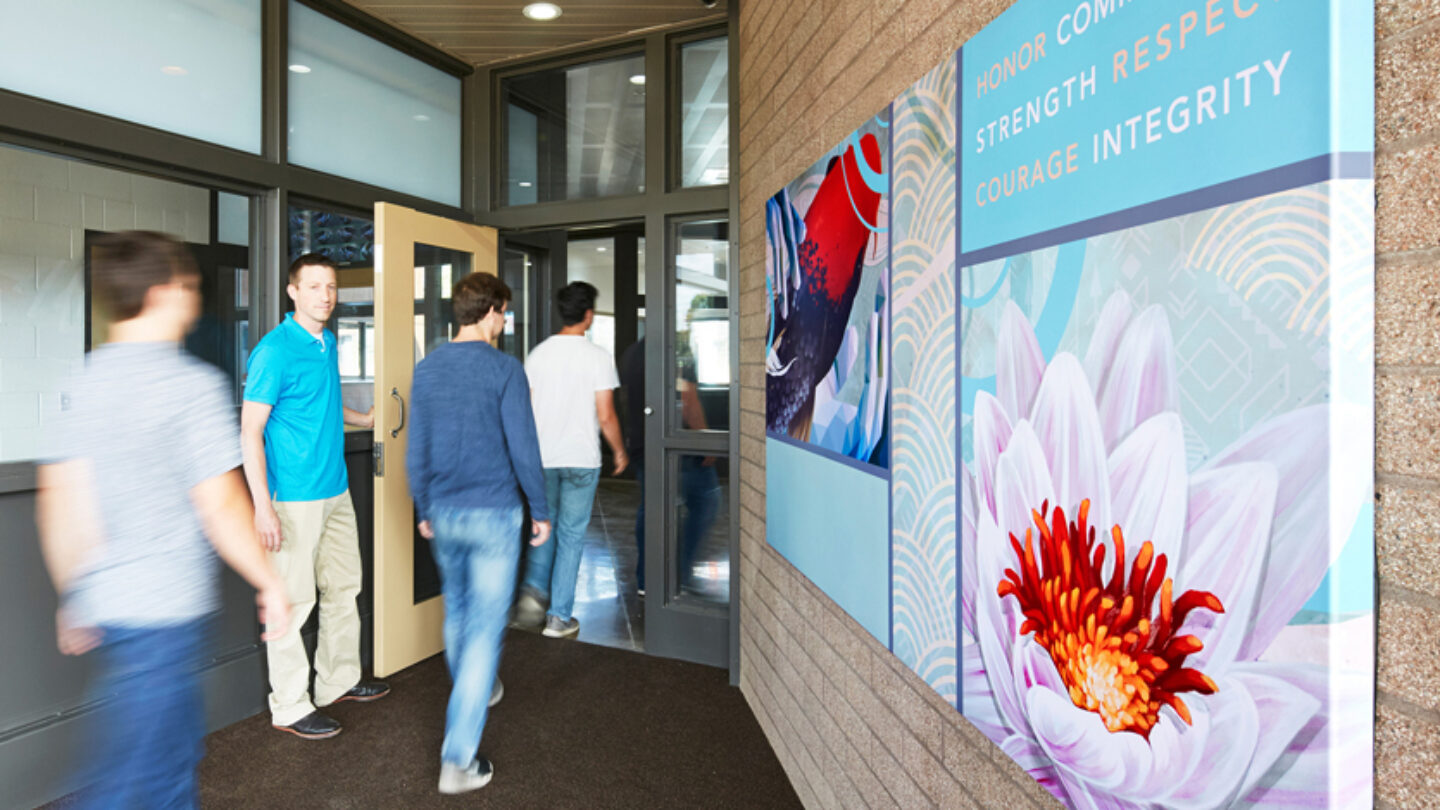
Artwork in the entry vestibules reminds youth of the restorative justice values that drove the graphic design: Honor, Commitment, Strength, Respect, Courage and Integrity.
Sally Painter, Blaine Fontana, Mayer/Reed, DLR Group
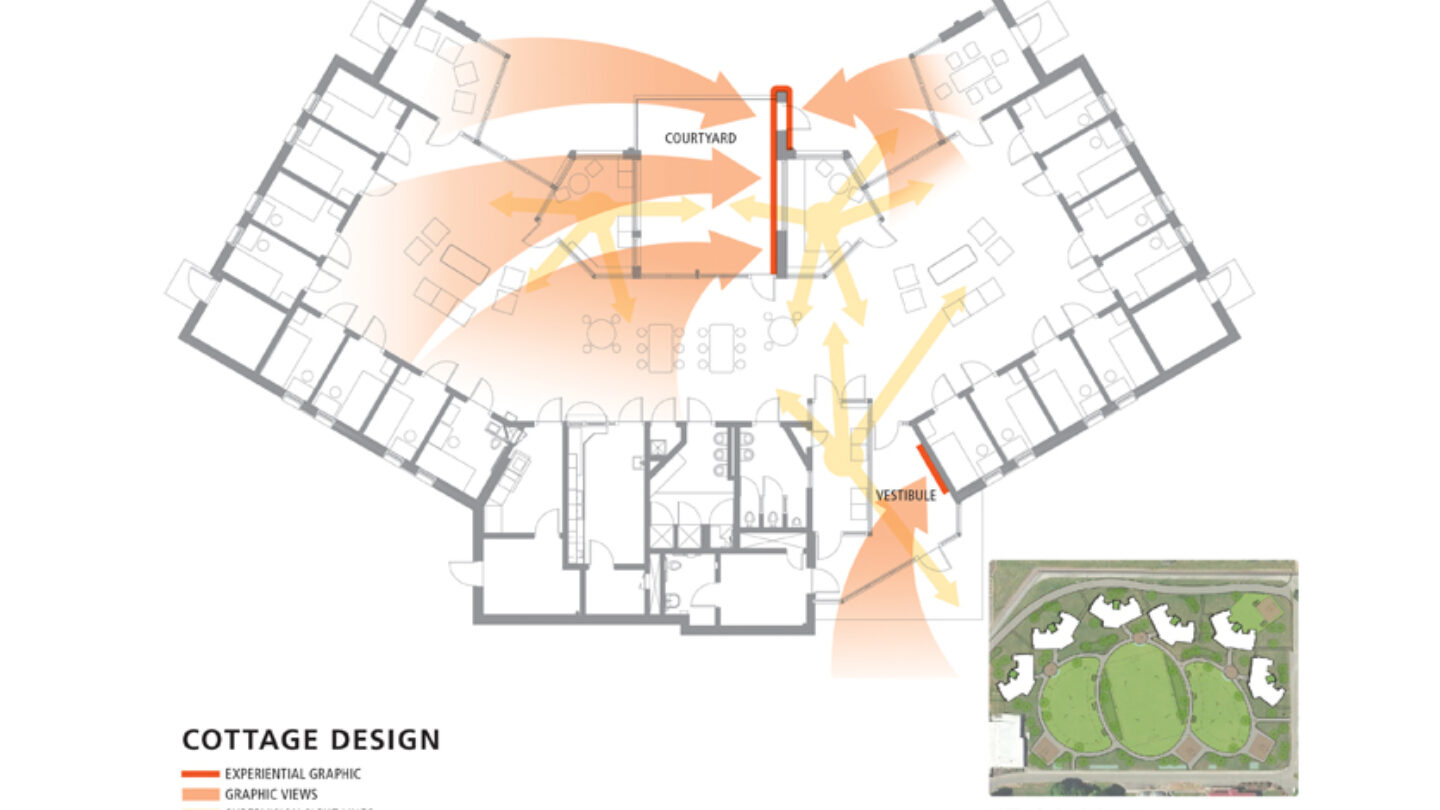
Sally Painter, Blaine Fontana, Mayer/Reed, DLR Group
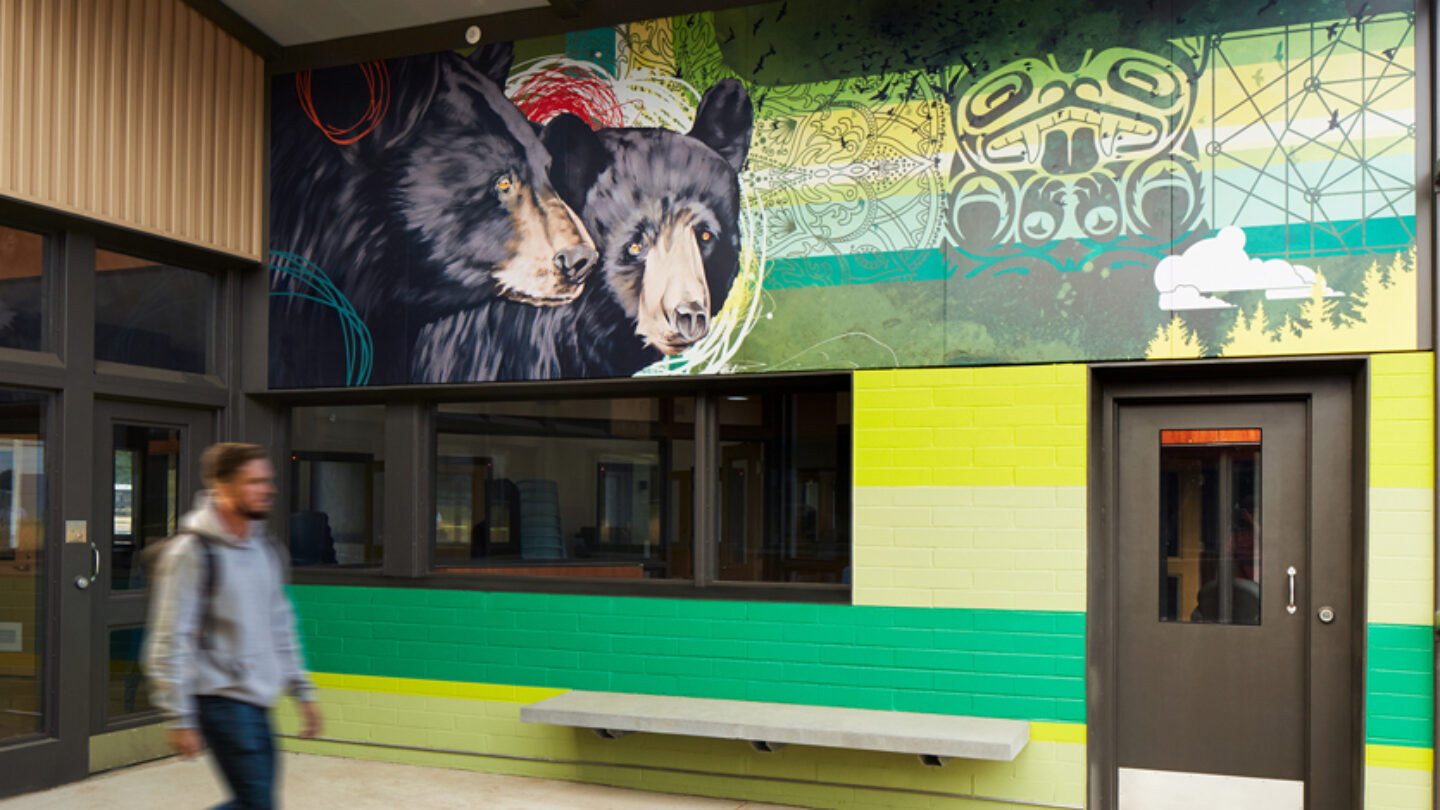
Represented colors, symbols, patterns and animals reflect culturally meaningful imagery for a population of many minority identities.
Sally Painter, Blaine Fontana, Mayer/Reed, DLR Group
Project Details
This work illustrates the essence of art: to impact society in a meaningful and productive way. The dynamic murals use images, symbolism, bold colors, and graphics to inspire and bring a smile to the faces of youths and to give them hope for their future.
Opens the door for how we should be designing environments to creative positive change, especially for those that need our help the most. Sets a new standard for design of environments that are traditionally cold and forgotten. Fantastic representation of how to connect to the user, regardless of who they are and what brought them there.
Design Team
Kathy Fry (principal in charge, design director)
Blaine Fontana (artist)
Margaret Drew, Liz Talley (designers)
Debbie Shaw (design support)
Michael Reed (advisor)
Consultants
DLR Group
Karen Kiest (landscape architect)
Emerick Construction Co. (contractor)
MacLaren Youth and Staff (workshop participants)
Fabricator
Alto & Folia by SH
Photo Credits
Sally Painter, Blaine Fontana, Mayer/Reed, DLR Group
Open Date
September 2017